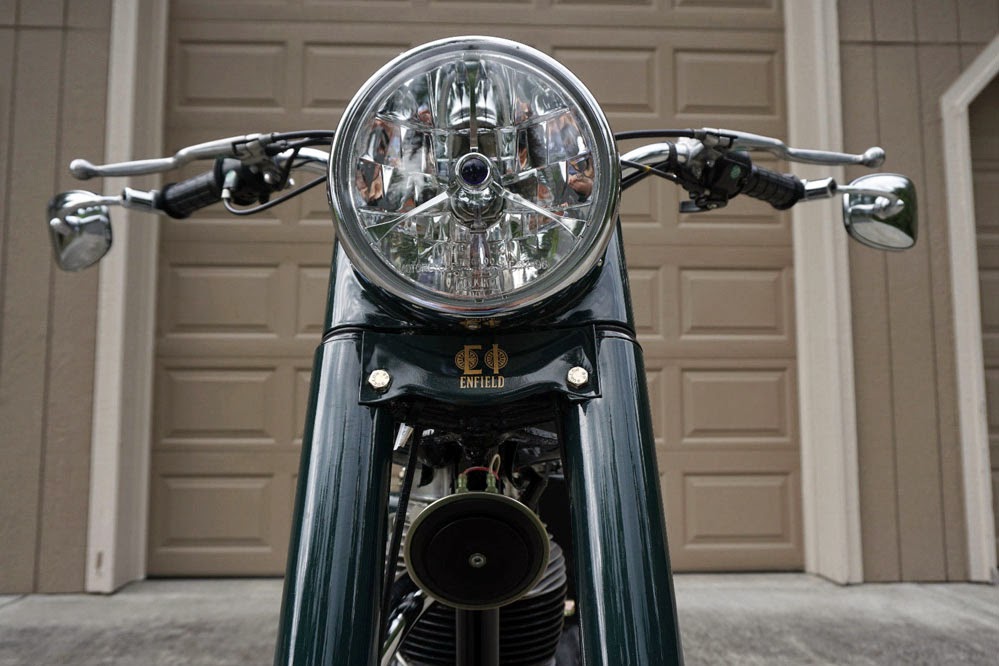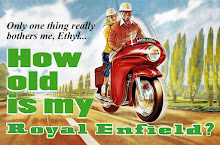 |
| Want to make your Royal Enfield Continental GT faster? |
Ace Performance Bullets will offer a replacement head for the Royal Enfield Continental GT that will give street riders real world performance improvement.
The new head will line up with existing intake and exhaust components so that owners can swap it in and go riding. Best of all, owners won't need to rebuild the bottom ends of their motors to withstand the increased performance; the new head will make power within the limits of the existing Unit Constructed Engine (UCE) motor.
Ace built its reputation on the Fireball heads it still offers for iron-barrel Bullets. Owners must break the cases of these to install stronger (and pricey) bottom end components, while the stock heads are sent to Ace to be modified and shipped back.
"It was taking three months for each job, and this was something that we wanted to improve," Tom Lyons of Ace wrote on their
Ace Performance Bullets Yahoo group.
"With the new heads, it should be available at fairly short notice, depending on how much I can stock at any given time, or short production time, so little or no wait. I think that this ready availability is something that people will appreciate.
"Also, it gives us the freedom to make a new head with a completely clean sheet of paper, other than having to have the inlet and outlet connections at the factory locations. We have freedom to design new combustion chamber, new ports, new valve angles and sizes and locations, new rocker arrangements, etc.
"We plan to pack this thing full of advanced features, and it will all be in the CNC program to cut it out of a big hunk of billet aluminum."
What followed from him were the technical details of high-ratio roller rockers, beehive valve springs and 6,200 rpm. Simple? No-o-o-o. Along with designing and manufacturing the hardware, Ace will need to reprogram ECU software, overcome the rev limiter and adjust mixture and ignition.
At what cost — for a brand new head?
"This is not priced as yet, because it is still not yet released, but we are expecting pricing to be in the $2,000-plus price range. We don't know yet how much higher than $2,000, but we are going to try to keep it as close to that as we can," Lyons wrote.
Ace offers a wide variety of other options — including making use of your existing head — and Lyons answers individual questions on the group. Indeed, he is one of the most helpful Royal Enfield "answer men" on the Internet, regardless of the question.
(You'll find his personal email address listed on the group home page, but please ask your question on the forum so we can all learn from the answer.)
It's fascinating to watch as Ace introduces one product line after another for Royal Enfield applications from ancient iron heads to the newest Continental GT.
It seems clear now that Royal Enfield motorcycles can and will go faster, reliably, if not cheaply. Seemingly under the radar of the most enthusiasts and the motoring press, Ace is leading the way.
I have no connection to Tom Lyons or Ace. I'll personally be leaving my own 1999 Bullet stock-ish (but,
if I had a rebuild coming up...).
As an enthusiast I do appreciate Tom's willingness to answer technical questions for anyone, customer or not.




























































